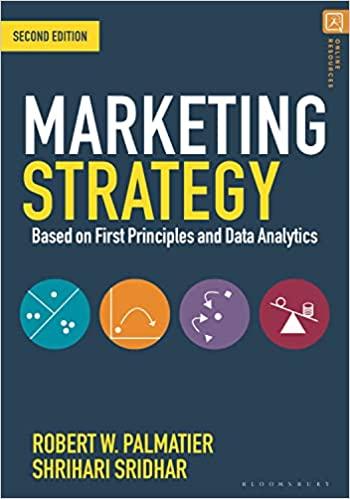EnergAid, which launched in 2005, was one of the early energy drinks on the market. It took
Question:
EnergAid, which launched in 2005, was one of the early energy drinks on the market. It took of among professional athletes and college students, and its catchy advertisements made a splash during landmark events like the Super Bowl and the Oscars. By the end of 2007, EnergAid had captured 70% of the market share. Through the late 2000s, the company utilized social media better than its competitors. Its Twitter and Facebook posts were punchy and inventive, and a couple of its entries even featured on late-night comedy shows. EnergAid understood the reach of snappy YouTube videos, placing its videos in the spotlight during global events like the soccer World Cup and the Olympics.
However, over the last few years EnergAid has seen a gradual erosion of market share. A number of new energy drinks have entered the fray – which has resulted in EnergAid’s awareness scores falling. The company has tried using celebrities like Justin Bieber and Indian megastar Akshay Kumar to run some campaigns, but none have worked out as it had hoped. Table 5.3 compares EnergAid with two of its competitors on overall brand awareness in 2015 and 2019.
EnergAid had seen brand awareness reduce from 86/100 to 81/100 over four years, a relatively gradual reduction that it was not critically worried about in isolation. However, worryingly for EnergAid, its two competitors saw steep increases in brand awareness. Galaja’s brand awareness increased more than two times from 33/100 to 78/100 while Enerboost saw its awareness increase four times, from 19/100 to 76/100.
Table 5.3

Every company needs to be wary of competition. Competitors always react, and failing to understand and address these competitive retaliations will lead to poor business performance. Thus, firms must address competitive attacks by building and maintaining sustainable competitive advantage (SCA). It is important to understand how to respond to competitors’ moves in relation to attributes such as price, branding, and quality. The challenge for EnergAid was to communicate the right brand identity to its consumers. Brand identity pulls together and describes who the brand is. If it were a person, what would they be like? A brand’s identity is often subsumed by customers who use the product, because they seek to connect the brand’s identity to their own self-identities.
Over the last few years EnergAid’s branding team has been unsure how to position the drink to match with its brand identity. Through its best years, it had made a name for its sincerity and ruggedness. However, its recent celebrity campaigns suggested it was looking to project EnergAid as an exciting brand in an attempt to lure the 18–35 segment of the population. The challenge was to understand whom to target and what message to put forth for the relevant audience.......
QUESTIONS
1. Based on reviewing the data, summarize the mean scores of EnergAid, Galaja, and Enerboost on each of the five brand dimensions (sincerity, excitement, competence, sophistication, ruggedness).
● Which two dimensions does EnergAid score the best in?
● Which two dimensions does Galaja score the best in?
● Which two dimensions does Enerboost score the best in?
2. Based on your brand identity analysis, could you suggest
● Which two dimensions should EnergAid emphasize? These are dimensions that EnergAid is strong in, but others are weak in.
● Which two dimensions should EnergAid de-emphasize? These are dimensions that EnergAid is weak in, but others are strong in.
Step by Step Answer:






